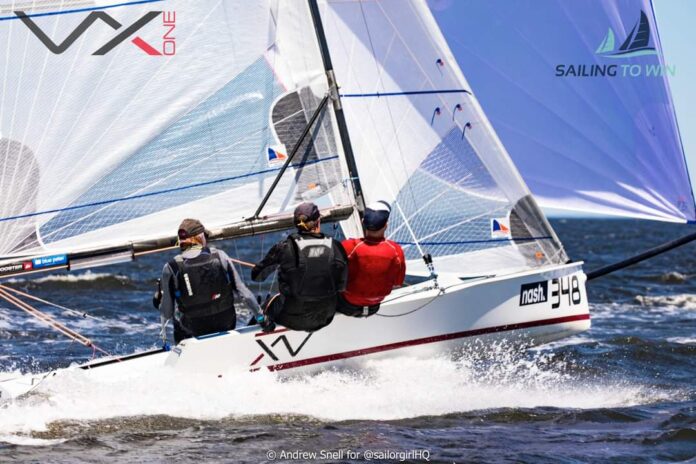

Boom Vang Basics. The boom vang helps control and maintain mainsail twist, keeping your sail performance dialled in and offering opportunities to trim with more finesse.
The vang control should be led back to where the helmsperson in a single-handed or small crewed boat can easily reach it without having to look down.
Likewise, on a larger, multi-crewed boat, the vang control should be positioned where the trimmer has instant, easy access.
Uses and effects of the vang
The vang assists in controlling the height of the boom and can, in some cases, provide extra stability.
Use the vang to counteract too much leech twist. This happens when the trimmer has reached the limits on the mainsheet or traveller.
When you ease the mainsheet, you sacrifice power and speed. As you ease the sheet, tighten the vang to maintain the angle of the boom (and so, the twist).
How do we know when to adjust the vang?
Your upper leech tell-tales on your mainsail will tell you.
The vang is a useful tool at all angles, but is essential when beam reaching or wider. The vang will pull down on the boom and maintain a good upper leech angle, reducing mainsail luffing.
Vang Upwind
A crucial component of efficient upwind sail trim is twist. Different amounts of twist are needed depending on the prevailing wind and wave conditions.
When sailing upwind, twist is controlled using mainsheet and vang tension, and the correct twist is determined by using the mainsail telltails.
If your vang is pulled on too hard, you will not be able to add twist by easing the mainsheet.
When you sail into a lull, you need to adjust the mainsheet and vang tension. This gives the necessary twist to keep the telltails flying and to reduce drag.
In light wind and choppy conditions, having the right vang tension will help to keep the boom from bouncing erratically.
In heavy air, the outhaul, backstay and Cunningham are on tight, plus the traveller will be down. To help with pointing, you will employ a combination of sheet and vang tension to keep power in the lower leech.
Vang when Reaching
When reaching, the vang is the only control that affects mainsail twist. As the boom is eased beyond the quarter of the boat with the traveller down, the mainsheet is no longer effective at holding the boom down, so the vang takes over.
A good indicator of good vang tension is if the top batten is as close to parallel with the boom as possible, usually ending up at 25° off parallel.
When tight reaching in windy conditions, it is important to be proactive rather than reactive with the vang, especially with a spinnaker up.
It is nearly always too late if you are waiting for the call “blow the vang”.
Vang when Running
When running, the mainsheet is completely ineffective at controlling mainsail twist. Pull the vang on to keep your top batten parallel to the boom.
This keeps the mainsail fully projected to the wind.
A common mistake when running downwind in heavy airs is blowing the vang when the boat begins to roll.
In a panic, someone blows the vang, thinking it will prevent a broach, as it does on a reach. Unfortunately, the opposite happens. The mainsail depowers completely, the spinnaker takes over, and the imbalance can gybe the boat.

